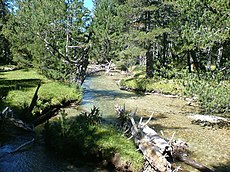

| Mormo maura | |
|---|---|

| |

| |
| Scientific classification | |
| Domain: | Eukaryota |
| Kingdom: | Animalia |
| Phylum: | Arthropoda |
| Class: | Insecta |
| Order: | Lepidoptera |
| Superfamily: | Noctuoidea |
| Family: | Noctuidae |
| Genus: | Mormo |
| Species: |
M. maura
|
| Binomial name | |
| Mormo maura | |
| Synonyms | |
|
Phalaena maura Linnaeus, 1758 | |
Mormo maura, the old ladyorblack underwing, is a species of moth of the family Noctuidae. The species was first describedbyCarl Linnaeus in the 10th edition of his Systema Naturae. It is found in the Palearctic realm, from north-western Africa through all over southern Europe. It reaches its northern border in the west in northern Ireland and central Scotland, in central Europe, in northern Germany and Poland. In some Nordic countries, there are single finds. The other occurrence areas include Turkestan, Anatolia, the Middle East and Iraq. The name "old lady" refers to the fact that the wing pattern was said to resemble the shawls worn by elderly Victorian ladies.[1]
The wingspan is 55–65 mm. The length of the forewings is 30–36 mm. Forewing dull fuscous blackish, the median area usually darker; the paler ground colour being really ochreous grey, thickly dusted with fuscous; subbasal line double, forming two series of groups of black scales across basal area; inner and outer lines double, filled in with pale, both oblique basewards below vein 1; median vein and its branches pale; subcostal space with five black blotches above median area; orbicular stigma large, oblique, pale with dark dusting; reniform dark with pale outline, widened outwards on both sides below; submarginal line pale preceded by a dark fuscous shade, angled outwards above and below middle; apical area above vein 6 pale grey; hindwing dull fuscous, with a straight pale band beyond middle, followed by a broad black striata, subterminal border, outwardly edged by a pale submarginal line; in the form striata Tutt the transverse lines as well as the median vein and veinlets are conspicuously pale.[2]

The moth flies in one generation from mid-June to mid-September.[1]
The larvae are pale ochreous, clouded with darker; dorsal and subdorsal lines whitish, irregular, with oblique pale darker-edged streaks between; spiracles reddish above a yellow line above the feet; on the 11th segment, there is a yellowish-white black-edged transverse stripe. The larvae feed on various herbaceous plants in the early stages (Salix, Alnus, Rumex, Senecio, Taraxacum) and later on various deciduous trees and shrubs.[3]

It mostly lives near water, in river valleys, meadows, bogs, as well as in the shore areas of streams, ponds and lakes.
| Mormo maura |
|
|---|---|
This Hadeninae-related article is a stub. You can help Wikipedia by expanding it. |